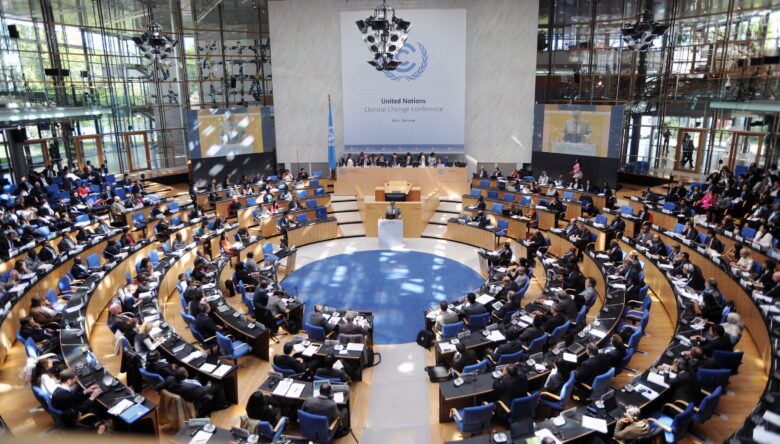California has long been at the forefront of environmental sustainability, and the California Air Resources Board (CARB) plays a pivotal role in shaping the state’s environmental policies and regulations. Established in 1967, CARB has become a leading force in protecting public health and the environment, making significant contributions to reducing air pollution, combating climate change, and promoting clean energy solutions. In this blog post, we will delve into CARB’s history, purpose, regulatory authority, and its various initiatives to achieve environmental sustainability in California.
Contents
- The History and Purpose of CARB
- It’s Regulatory Authority
- Addressing Air Pollution and Climate Change
- Clean Vehicle Programs
- California’s Cap-and-Trade Program
- Impact on Industry and Business
- Collaboration with Other States and International Entities
- Role in Environmental Justice
- Future Goals and Challenges
- Public Participation and Engagement with CARB
- Conclusion
The History and Purpose of CARB

Source: wardsauto.com
The California Air Resources Board was established in response to growing concerns about air pollution and its detrimental effects on public health. Its primary purpose is to protect the air quality and reduce harmful emissions in California. Over the years, this institution has achieved significant milestones, including the implementation of regulations to reduce smog-forming pollutants and the establishment of the Zero-Emission Vehicle (ZEV) program.
It’s Regulatory Authority
CARB is granted regulatory authority by the California legislature to develop and enforce emission standards and regulations for a wide range of industries, including transportation, energy, and manufacturing. Through the adoption of stringent standards, it aims to reduce pollution and mitigate the impacts of climate change.
Addressing Air Pollution and Climate Change
This institution has spearheaded numerous initiatives to address air pollution and combat climate change. Some of it you can see if you visit this page. It has implemented regulations targeting major sources of pollution, such as motor vehicles, power plants, and industrial facilities. These efforts have resulted in significant reductions in harmful emissions, contributing to improved air quality and a healthier environment for Californians.
Clean Vehicle Programs

Source: maersk.com
This institution has been instrumental in promoting clean transportation and accelerating the adoption of zero-emission vehicles (ZEVs). Through the ZEV program, it has established targets for automakers to produce a certain percentage of ZEVs, leading to the availability of more electric and hydrogen fuel cell vehicles in California. Additionally, CARB offers incentives and financial assistance to encourage individuals and businesses to switch to clean vehicles.
California’s Cap-and-Trade Program
Its cap-and-trade program is a key component of California’s comprehensive approach to reducing greenhouse gas emissions. Under this program, certain industries are required to hold permits for their emissions, and there is a limit (or cap) on the total amount of emissions allowed. Companies that exceed their allocated emissions must purchase allowances from those with excess, creating a financial incentive to reduce emissions.
Impact on Industry and Business
Their regulations and programs have a significant impact on various industries in California. Businesses operating in sectors such as transportation, energy production, and manufacturing must comply with CARB’s stringent requirements, including emission limits and reporting obligations. This regulatory framework pushes industries to adopt cleaner practices, invest in research and development of low-carbon technologies, and improve energy efficiency.
While this presents challenges for some companies, it also creates opportunities for innovation and the development of cleaner technologies. Many businesses have successfully adapted to CARB’s regulations, gaining a competitive edge by offering environmentally sustainable products and services. Furthermore, its programs, such as grants and incentives for clean technologies, support the growth of sustainable businesses and create a favorable environment for economic growth and job creation in California’s green economy.
Collaboration with Other States and International Entities

Source: who.int
It recognizes the importance of collaboration and partnerships in addressing global environmental challenges. It actively collaborates with other states in the United States, such as the Northeastern states participating in the Regional Greenhouse Gas Initiative (RGGI), as well as international entities, including the United Nations Framework Convention on Climate Change (UNFCCC).
Through these collaborations, CARB shares knowledge, best practices, and lessons learned, promoting a coordinated and unified approach to combatting climate change. By working together, CARB and its partners can make a more significant impact in mitigating climate change, reducing greenhouse gas emissions, and protecting the environment. The exchange of ideas and expertise across borders helps accelerate the development and adoption of sustainable policies and practices worldwide, leading to a more sustainable and resilient future for all.
Role in Environmental Justice
Environmental justice is a crucial aspect of CARB’s work. The agency is committed to addressing the disproportionate impacts of pollution on vulnerable communities. CARB implements programs and policies that prioritize equitable access to clean air, clean water, and environmental resources, ensuring that no community is left behind in the transition to a sustainable and healthier future.
This institution conducts extensive research and data analysis to identify environmental disparities and develop targeted initiatives to address these inequities. By actively engaging with affected communities and incorporating their voices into decision-making processes, CARB aims to create meaningful change and promote environmental justice for all Californians.
Future Goals and Challenges
Looking ahead, CARB has ambitious goals to continue driving environmental sustainability in California. These goals include further reducing greenhouse gas emissions, transitioning to a clean energy economy, and advancing environmental justice. However, CARB faces challenges such as political opposition, technological limitations, and balancing economic growth with environmental protection.
To overcome these challenges, CARB collaborates with various stakeholders, including industry representatives, advocacy groups, and academic institutions. The agency embraces innovation and continuously seeks to explore new strategies and technologies to achieve its sustainability objectives. By fostering partnerships and adapting to evolving circumstances, CARB strives to overcome obstacles and maintain its position as a leading force in environmental sustainability.
Public Participation and Engagement with CARB

Source: vanir.com
This institution recognizes the importance of public input and engagement in shaping its policies and regulations. The agency encourages public participation through public meetings, workshops, and comment periods, providing an opportunity for individuals, communities, and stakeholders to voice their concerns and contribute to the decision-making process. CARB actively seeks input from a diverse range of perspectives, ensuring that its policies reflect the needs and aspirations of the communities it serves.
Additionally, CARB promotes transparency by making relevant information readily available to the public and seeking public feedback on draft regulations and programs. By fostering an inclusive and participatory approach, CARB aims to enhance accountability, build trust, and foster collaborative solutions to environmental challenges.
Conclusion
CARB has played a vital role in California’s journey towards environmental sustainability. Through its regulatory authority, initiatives, and collaborative efforts, CARB has made significant progress in reducing air pollution, combating climate change, and promoting clean energy solutions. As California’s leading force in environmental sustainability, CARB continues to inspire action, drive positive change, and pave the way for a greener and healthier future for all Californians.
